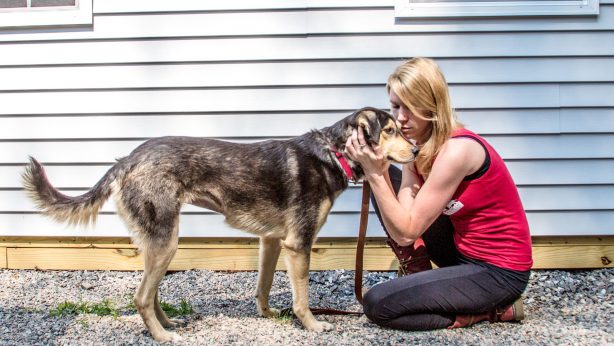Are You Tired of Your Cat Thinking “Out of the Box?
Are You Tired of Your Cat Thinking “Out of the Box?
by Baypath Partner, Rachel Geller, Ed.D., Cat Behaviorist
Whenever a client comes to me with litter box issues, first I want to be 100% sure on the medical front. The most obvious issue is a urinary tract infection (UTI), but there are a lot of cat illnesses that will cause the cat not to use the box. In addition, if the cat has any pain associated with peeing or pooping, she won’t use the box because she will associate that box with the pain.
I often have clients tell me that their cats are peeing on items due to spite or jealousy. They don’t pee on a certain side of the bed or on someone’s clothes to send a message, get back at or purposely irritate their humans. Cats always have legitimate reasons for not using their litter boxes, and holding grudges or being deliberately irritating are not among them. Although cats absolutely do feel emotions and their responses to certain things (i.e., a change of environment, death of a human or companion cat) can be similar to our’s, they don’t act out of revenge, nor do they intentionally try to bother us, irritate us or send messages with pee. These types of behaviors we humans can call our very own.
Let’s look at your litter box set up to get started.
Make sure you have enough litter boxes. The rule of thumb is to always have one more litter box than the amount of cats you have, even if you only have one cat. Try placing another box in a different area. If there is a particular part of the house that she likes to hang out, that could be a good spot to place a box. If you add a couple in some other areas and she uses them, you may solve your problem. Then, you can remove the ones she didn’t use. Also, there are some cats who refuse to poop and pee in the same box.
Let’s also talk about location strategies as part of our detective work. Cats feel very, very vulnerable in their litter boxes. They are more aware of all the potential cats who could be on their territory, and this can be real or imagined – even only cats get this feeling. Your cat may have a need to see her opponents, so she is seeking a place to “go” wheres she can easily watch for that opponent, and should one appear, she has an escape route. For many cats, having the litter box in a location where there are clear sight lines is very important.
Make sure the litter boxes are uncovered and that the sides aren’t too high, causing the cat to feel closed in. You also want to make sure the litter box is not under something (like the sink) and not tucked tightly into a corner. Bathrooms, mudrooms and annexes are popular locations for litter boxes, because they are out of the way, but cats don’t like to have to go on a journey to faraway lands to get to their boxes. It may be just a matter of sliding the box out from a corner to give her more visual warning time.
If the box is in a room on the same wall as the entrance, move it to the opposite side so she can see across the room and into the hallway leading to the entrance. Do the move gradually though, a few inches a day. If the box is under something, try pulling it out a couple of feet. For some cats, just sliding the box 12 inches away from the wall might increase the security level enough. Many cats prefer a room that has more than one entrance so if the enemy (real or imagined) comes in one way, she can escape the other way.

Make sure the box is not in or near the laundry room. The sudden noise of the spin cycle may be too much. If your cat was in the litter box when the spin cycle came on, or noise from water in the pipes, or any of those other “laundry” noises and the cat was startled or scared, that would be enough to prevent that cat from using that litter box again.
If the shape of your room where the litter boxes are is such that you may be thinking that the litter box location is entirely wrong and you want to try a location in a different room, it’s better to get a second box and put it in a new spot rather than abruptly moving the old one to the new spot. Leave the old box there for consistency and security if you decide to go this route. This will allow your cat to ease through the transition.
In general, always think escape and visual warning time!
Sometimes the litter itself is the problem. Although there are many scented and perfumed litters, cats generally prefer a litter that has a soft, sandy texture. Some cats have more sensitive paws, so the texture of the litter needs to be taken into consideration.
Rachel S. Geller, Ed.D.
Cat Behaviorist, Pet Chaplain, Humane Education Specialist
Board of Directors, The Cat Connection
Shelter Cat Behaviorist: Here Today Adopted Tomorrow Animal Sanctuary & Baypath Humane Society


